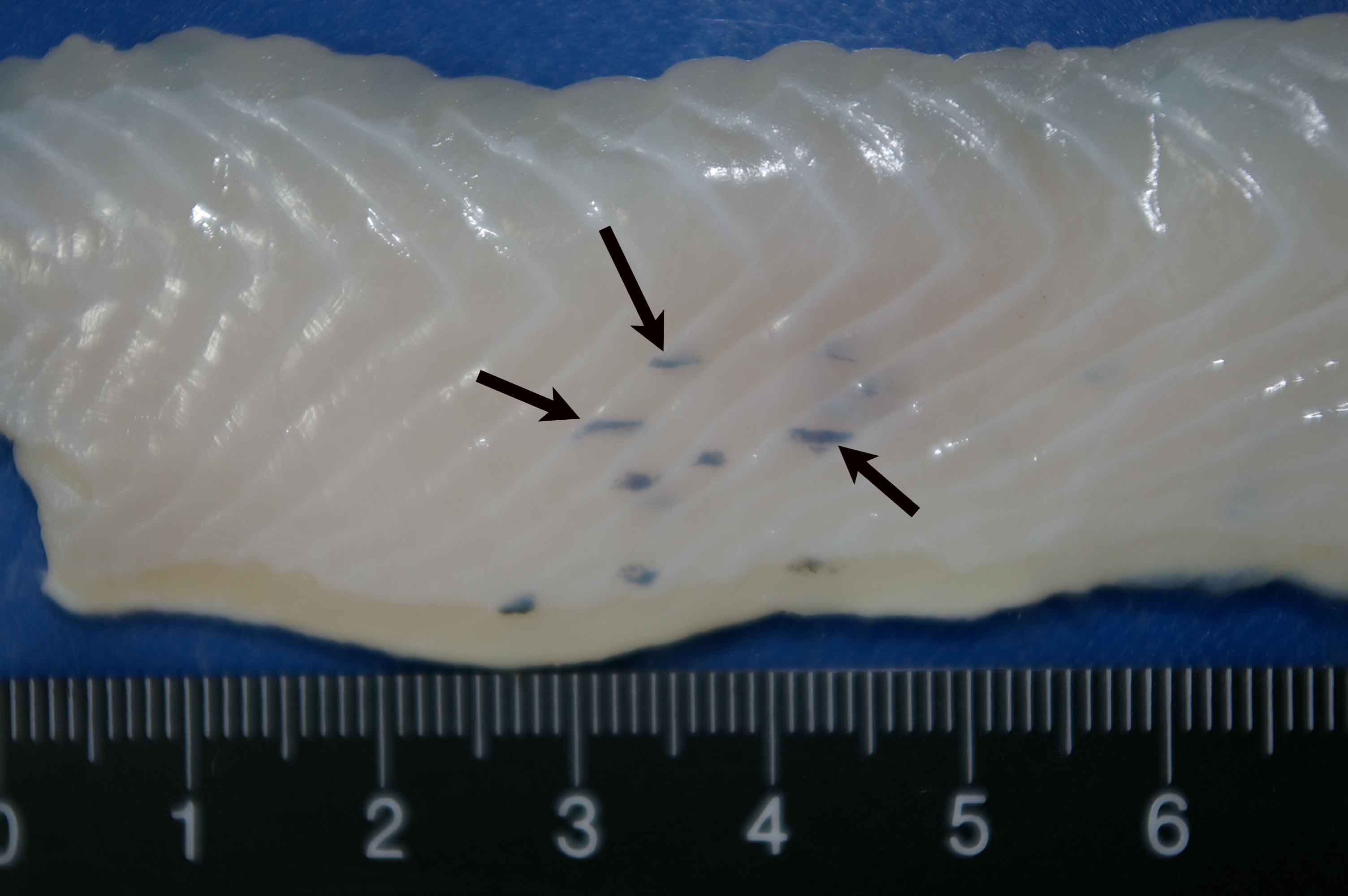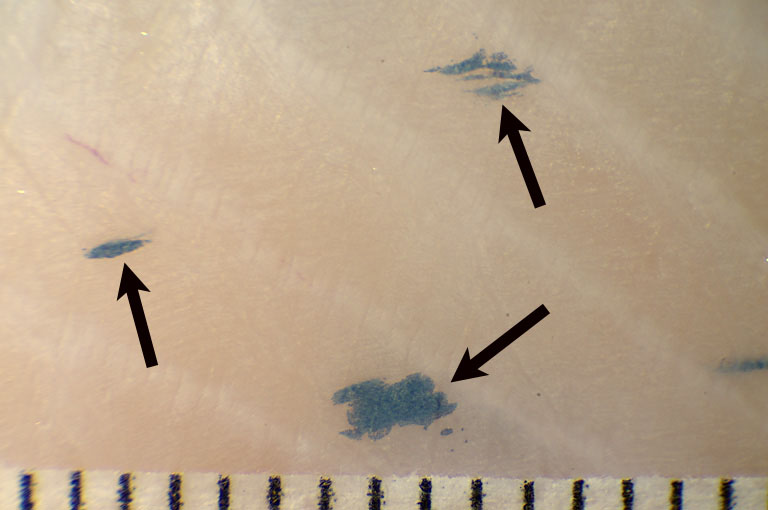

| Parasite | Capillaria sp. |
|---|---|
| Taxonomy | Nematoda, Adenophorea, Capillariidae |
| Host | Daggertooth pike conger (Muraenesox cinereus) |
| Infection site | Between the peritoneum and the muscle |
| Clinical sign | Black foreign bodies are observed in the muscle (Fig. 1). These bodies are aggregations of bistered spots (Fig. 2). |
| Parasitology | These spots are eggs of a parasite (Fig. 3). The fusiform eggs, ca. 65 mm in length, have a thick shell and 2 plug-like structures at the both ends (Fig. 4). These morphological features indicate that they are eggs of the nematode belonging to the genus Capillaria. However, the parasite cannot be identified because of no availability of the main body of the parasite. |
| Pathology | The pathogenicity to fish may be low. |
| Health hazard | Capillaria philippinensis, a parasite of fish, is known to parasitize human. However, Capillaria sp. in daggertooth pike conger is different species from C. philippinensis because development of larvae is not observed inside the eggs. Therefore, it is probably harmless in food hygiene. |
| Diagnosis | The parasite was presumptively diagnosed by size and morphological observations of eggs. |
| References | None |
Fig. 1. Several foci (arrows) in the fillet of Daggertooth pike conger


(Photos by J. Araki)
Fig. 4. Plug-like structure (arrows) at the both end of eggs
of Capillaria sp
Fig. 3. Aggregates of parasite eggs.
Fig. 2. Parasite foci (arrows) in the muscle.